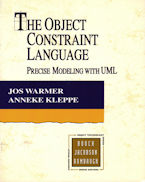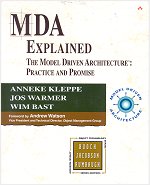Experienced application developers often invest more time in building models
than they do in actually writing code. Why?
Well-constructed models make it easier to deliver
large, complex enterprise systems on time and within budget.
Now, a new framework advanced by the Object Management Group (OMG)
allows developers to build systems according to their core business logic
and data—independently of any particular hardware, operating system, or middleware.
Model Driven Architecture (MDA) is a framework based on the Unified Modeling Language (UML)
and other industry standards for visualizing, storing, and exchanging software designs and models.
However, unlike UML, MDA promotes the creation of machine-readable,
highly abstract models that are developed independently of the implementation technology
and stored in standardized repositories.
There, they can be accessed repeatedly and automatically transformed by tools
into schemas, code skeletons, test harnesses, integration code,
and deployment scripts for various platforms.
Written by three members of OMG’s MDA standardization committee,
MDA Explained gives readers an inside look at the advantages
of MDA and how they can be realized.
This book begins with practical examples that illustrate the application of different types of models.
It then shifts to a discussion at the metalevel,
where developers will gain the knowledge necessary to define MDA tools.
Highlights of this book include:
• The MDA framework, including the Platform independent Model (PIM) and Platform Specific Model (PSM)
• OMG standards and the use of UML
• MDA and Agile, Extreme Programming, and Rational Unified Process (RUP) development
• How to apply MDA, including PIM-to-PSM and PSM-to-code transformations
for Relational, Enterprise JavaBean (EJB), and Web models
• Transformations, including controlling and tuning, traceability,
incremental consistency, and their implications
• Metamodeling
• Relationships between different standards, including Meta Object Facility (MOF),
UML, and Object Constraint Language (OCL)
The advent of MDA offers concrete ways to improve productivity, portability,
interoperability, maintenance, and documentation dramatically.
With this groundbreaking book, IT professionals can learn to tap this new framework
to deliver enterprise systems most efficiently.

